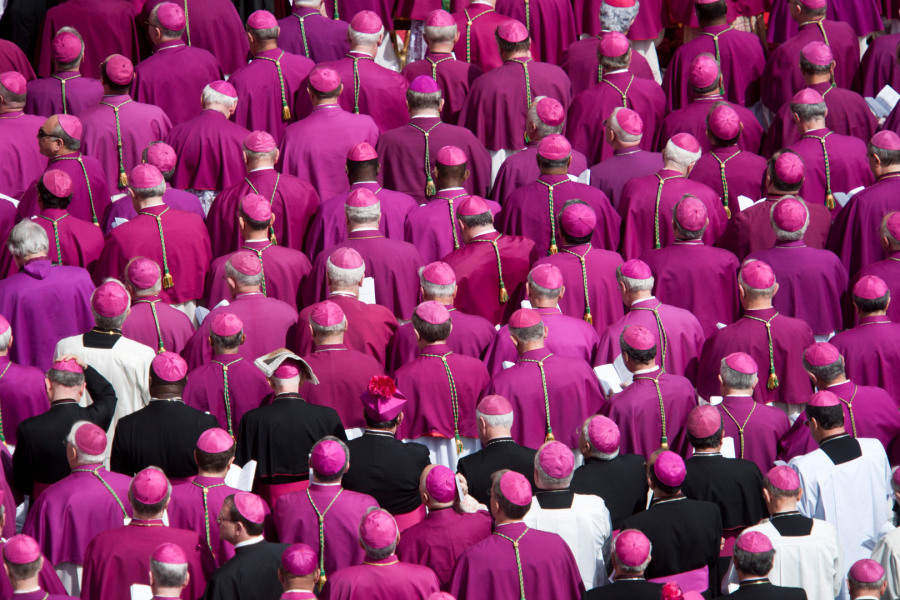- This topic has 649 replies, 16 voices, and was last updated 10 years, 8 months ago by
 Proclaimer.
Proclaimer.
- AuthorPosts
- October 25, 2021 at 10:34 pm#891550
 gadam123Participant
gadam123ParticipantI don’t mind discussing history. But I need you to admit that the Medes and the Persians were given the kingdom after the Babylonians. You have 3 witnesses in the Book of Daniel for this
OK let us see your three witnesses;
1. There is no mention of name of the kingdom for the second metal as “Medes and Persia” in Dan 2:
32 The head of that statue was of fine gold, its chest and arms of silver, its middle and thighs of bronze, 33 its legs of iron, its feet partly of iron and partly of clay.
39 After you shall arise another kingdom inferior to yours, and yet a third kingdom of bronze, which shall rule over the whole earth.
2. Daniel 7:5 Bible Commentary on “The two sided second beast where one side was raised up compared to the other”
And, behold, another beast, a second, like to a bear – That is, after the lion had appeared, and he had watched it until it had undergone these surprising transformations. There are several circumstances, also, in regard to this symbol, all of which, it is to be supposed, were significant, and all of which demand explication before it is attempted to apply them.
Its rising up on one of its sides: “and it raised up itself on one side.” The Chaldee word used here (שׁטר sheṭar) occurs nowhere else. It means side (Gesenius), and would be applied here to the side of an animal, as if he lifted up one side before the other when he rose. The Latin Vulgate renders it, in parte stetit. The Greek (Walton), έις μέρος ἕν ἐστάθη eis meros hen estathē – “it stood on one part;” or, as Thompson renders it, “he stood half erect.” The Codex Chisianus, ἐπὶ τοῦ ἑνὸς πλευροῦ ἐστάθη epi tou henos pleurou estathē – “it stood upon one side.” Maurer renders this, “on one of its forefeet it was recumbent, and stood on the other,” and says that this is the figure exhibited on one of the stones found in Babylon, an engraving of which may be seen in Munter, Religion d. Babyl. p. 112. The animal referred to here, as found in Babylon, says Lengerke, “lies kneeling on the right forefoot, and is in the act of rising on the left foot.” Bertholdt and Havernick understand this as meaning that the animal stood on the hindfeet, with the forepart raised, as the bear is said to do; but probably the true position is that referred to by Maurer and Lengerke, that the animal was in the act of raising itself up from a recumbent posture, and rested on one of its forefeet while the other was reached out, and the body on that side was partially raised. This position would naturally denote a kingdom that had been quiet and at rest, but that was now rousing itself deliberately for some purpose, as of conquest or war – as the bear that had been couching down would rise when hungry, or when going forth for prey.
The application of this symbol was not explained by the angel to Daniel; but if the former pertained to Babylon, there can be little difficulty in understanding to what this is to be applied. It is evidently to what succeeded the Babylonian – the Media, the kingdom ruled successively by Darius the Mede as per Dan 5: 30-31 and 9:1. The only inquiry now is as to the pertinency of the symbol here employed to represent this kingdom.
The symbol of the bear. As already seen, the bear would denote any fierce, rough, overbearing, and arbitrary kingdom, and it is clear that while it might have applicability to any such kingdom, it would better represent that of Medes than the lion would, for while, in some respects, either symbol would be applicable to either nation, the Media or Medo-Persia did not stand so decidedly at the head of nations as the Babylonian. As to its character, however, the bear was not an inappropriate symbol. Taking the whole nation together, it was fierce and rough, and unpolished, little disposed to friendliness with the nations, and dissatisfied while any around it had peace or prosperity.
In the image seen in Dan. 2., this kingdom, denoted by the breast and arms of silver Daniel 7:32, is described in the explanation Daniel 7:39 as “inferior to thee;” that is, to Nebuchadnezzar. So Media combined with Persia can not fit into the second place as Persia never was an inferior kingdom to Babylon and in fact a world wide empire larger than even Greece as per the historians.
3. The goat with two horns, one larger than the other. Dan 8:
20 As for the ram that you saw with the two horns, these are the kings of Media and Persia.
Here the Ram is representing the kingdoms of both Media and Persia but that doesn’t mean they are not two separate kingdoms as per the other texts of the book I mentioned in my previous posts.
Please give your commentary on Dan 11 so that we can understand about the third and fourth kingdoms of Daniel. Fourth is the main focus of Dan 7, 8 and 11 from which the Little horn would come forth.
October 25, 2021 at 11:42 pm#891551 gadam123Participant
gadam123ParticipantThe Nature of the Fourth Beast of Dan 7
Daniel seems uninterested in the first three beasts but wishes to understand the fourth better, especially the talking horn that spoke arrogantly. He sees the following:דניאל ז:כא חָזֵה הֲוֵית וְקַרְנָא דִכֵּן עָבְדָה קְרָב עִם קַדִּישִׁין וְיָכְלָה לְהוֹן.
Dan 7:21 I looked on as that horn made war with the holy ones and overcame them.
This horn is described as fighting with heaven and even winning, but it will ultimately be punished by a heavenly court, which will take away his dominion, and in its place a heavenly sanctioned, eternal kingdom will be established:דניאל ז:כב עַד דִּי אֲתָה עַתִּיק יוֹמַיָּא וְדִינָא יְהִב לְקַדִּישֵׁי עֶלְיוֹנִין וְזִמְנָא מְטָה וּמַלְכוּתָא הֶחֱסִנוּ קַדִּישִׁין.
Dan 7:22 Until the Ancient of Days came and judgment was rendered in favor of the holy ones of the Most High, for the time had come, and the holy ones took possession of the kingdom.At this point, Daniel receives a detailed explanation of the fourth beast:
דניאל ז:כג כֵּן אֲמַר חֵיוְתָא רְבִיעָיְתָא מַלְכוּ רביעיא [רְבִיעָאָה] תֶּהֱוֵא בְאַרְעָא דִּי תִשְׁנֵא מִן כָּל מַלְכְוָתָא וְתֵאכֻל כָּל אַרְעָא וּתְדוּשִׁנַּהּ וְתַדְּקִנַּהּ. ז:כד וְקַרְנַיָּא עֲשַׂר מִנַּהּ מַלְכוּתָה עַשְׂרָה מַלְכִין יְקֻמוּן וְאָחֳרָן יְקוּם אַחֲרֵיהוֹן וְהוּא יִשְׁנֵא מִן קַדְמָיֵא וּתְלָתָה מַלְכִין יְהַשְׁפִּל.
Dan 7:23 This is what he said: ‘The fourth beast means – there will be a fourth kingdom upon the earth which will be different from all the kingdoms; it will devour the whole earth, tread it down, and crush it. 7:24And the ten horns mean – from that kingdom, ten kings will arise, and after them another will arise. He will be different from the former ones, and will bring low three kings.The heavenly being’s explanation ends with a description of the judgment of the fourth beast and the establishment of the final, heavenly kingdom that will follow.
Interpreting the Interpretation
As noted above, based on the internal considerations of the book of Daniel and extrabiblical sources, this final kingdom can be identified as Greece. Although the beginnings of this empire are not described in chapter 7, the beginnings of both chapters 8 and 11 (8:5,8; 11:3–4) refer to a great king who dies at the peak of his power and was succeeded by four kings (8:8; 11:4ff.).In the context of the Hellenistic empire, these can be identified rather easily as Alexander the Great and the Diadochoi, his generals who succeeded him and divided up his empire into smaller kingdoms. The dynastyies of two of these generals, Seleucus Nicanor who founded the kingdom of Syria, and Ptolemy Lagus, who founded the kingdom of Egypt, were particularly relevant for the subsequent Hellenistic history of the land of Israel, which is located between Syria and Egypt. In fact, Daniel 11 goes on to describe the acts of the King(s) of North [= Seleucid king(s)] and the King(s) of the South [= Ptolemiac king(s)].
The ten horns of the fourth beast thus refer to a series of kings in one of these kingdoms, culminating with the blaspheming sovereign represented by the new horn. Scholars agree that the kingdom in question is Syria, and the kings are from the Seleucud dynasty, culminating in Antiochus IV as the blaspheming monarch. It is not fully clear if the number ten here is precise (in which case it would include Alexander too), or whether it is a typological or schematic number.
Antiochus IV and the New Little Horn
The new little horn (קֶרֶן אָחֳרִי זְעֵירָה) that grows on the beast speaks arrogantly, and makes war on heaven is none other than Antiochus IV Epiphanes. The same arrogant king, Antiochus IV, is criticized and feared elsewhere throughout the Danielic apocalypses, which describe in detail his attack on Jerusalem, its Temple, and the religious life of the residents of Judea.As suggested by John Collins, the final three kings uprooted by Antiochus IV were probably his brother Seleucus IV (ruled 187–175) and his two sons, Antiochus and Demetrius, who were both in line to inherit the throne before Antiochus IV Epiphanes. Seleucus IV was murdered by Heliodorus, and Demetrius was in Rome at the time as a hostage, allowing Antiochus IV to ascend to the throne.
The Horn’s Blasphemies
The text goes on to describe further the outrageous behavior of the new little horn:דניאל ז:כה וּמִלִּין לְצַד עליא [עִלָּאָה] יְמַלִּל וּלְקַדִּישֵׁי עֶלְיוֹנִין יְבַלֵּא
Dan 7:25 He will speak words against the Most High, and will speak [יבלא] (against) the Most High Holy One(s) (קדישי עליונין).The accusation of “speak(ing) words against the Most High” may refer to Antiochus’ usage of divine epithets (“God Manifest [= Epiphanes]”) on his coinage, but more likely refers to his general challenge of God’s Temple and people, which was viewed as blasphemous:
1 Macc 1:54 Now on the fifteenth day of Kislev, in the one hundred forty-fifth year, they erected a desolating sacrilege on the altar of burnt offering… 1:59 On the twenty-fifth day of the month they offered sacrifice on the altar that was on top of the altar of burnt offering.
2 Macc 6:4 For the temple was filled with debauchery and reveling by the Gentiles, who dallied with prostitutes and had intercourse with women within the sacred precincts, and besides brought in things for sacrifice that were unfit.6:5 The altar was covered with abominable offerings that were forbidden by the laws.The defiling of the Jerusalem Temple and the establishment of “desolating sacrilige” (βδέλυγμα ἐρημώσεως) – the equivalent of the שקוצ(ים) משֹׁמם “the appalling abomination” in Daniel 9:27 (see also 8:13; 11:31; 12:11) – is one of the primary accusations against Antiochus IV. It was perceived as an assault on the divine realm.
The Horn’s Attack on Jewish Holidays
Finally, the text describes this king’s attempt to make changes, presumably in Jewish practices:וְיִסְבַּר לְהַשְׁנָיָה זִמְנִין וְדָת וְיִתְיַהֲבוּן בִּידֵהּ….
He will think of changing times and laws, and they will be delivered into his power….This king’s desire to “change times and laws” is almost certainly a reference to Antiochus’ decrees against observing Shabbat and other cultic festivals (cf. 1Macc 1:45; 2 Macc 6:6):
1 Macc 1:44 And the king sent letters by messengers to Jerusalem and the towns of Judah; he directed them to follow customs strange to the land, 1:45 to forbid burnt offerings and sacrifices and drink offerings in the sanctuary, to profane sabbaths and festivals, 1:46 to defile the sanctuary and the priests, 1:47 to build altars and sacred precincts and shrines for idols, to sacrifice swine and other unclean animals, 1:48 and to leave their sons uncircumcised. They were to make themselves abominable by everything unclean and profane, 1:49 so that they would forget the law and change all the ordinances.
2 Macc 6:6 People could neither keep the sabbath, nor observe the festivals of their ancestors, nor so much as confess themselves to be Jews.Thus, the king represented by the small, new horn seems clearly to refer to Antiochus IV, and his abominable behavior is almost certainly a reference to the Antiochian persecutions which motivated the successful Hasmonean revolt commemorated by Chanukah.
October 31, 2021 at 10:03 am#891606 ProclaimerParticipant
ProclaimerParticipantgadam, I think you have a fundamental flaw in your understanding regarding empires which might address directly most of your concerns.
If two empires get together to usurp another empire, that doesn’t necessarily mean that the three empires cease to exist. A beast is an empire that rules over other empires. A beast is not equal to an empire because there are many more empires than beasts.
And the thing about the second beast / empire was it allowed other empires and peoples to live freely, so long as they adhered to their rules and paid taxes. This was the success of this second beast. They even allowed the Jews to go back and live in their homeland and even went as far as building the second temple.
Just because a Beast rises up, this does not negate that other empires exist in and around it. These empires may have conflict with one another beforehand and even during any kind of alliance. But ultimately, a beast is a descriptive for an empire that rules over other regions and empires.
October 31, 2021 at 10:18 am#891609 ProclaimerParticipant
ProclaimerParticipantDarius the Great: The Great King of Persia
Might be some useful information here. And trying to match history with what is written in the Bible is not always a match. However, there have been many examples where scholars have been proven wrong when archaeologists uncover something that shows what was written in the Bible to be correct. In fact, archaeologists use the Bible as an aid in discovery. History is proof, but of course much proof is still buried under sand or the ground.
As far as Darius goes, his name translates as ‘Lord’, so it is not certain whether that is the actual name or title and that he is an actual king that has already been discovered. Regardless, this video is about a man called King Darius and shows a family tree and how the Medes and Persians were connected. It might help in understanding that the Medes and Persians could certainly have ruled over the region given their close ties and intermingling.
November 1, 2021 at 4:33 pm#891649 gadam123Participant
gadam123Participantgadam, I think you have a fundamental flaw in your understanding regarding empires which might address directly most of your concerns.
If two empires get together to usurp another empire, that doesn’t necessarily mean that the three empires cease to exist. A beast is an empire that rules over other empires. A beast is not equal to an empire because there are many more empires than beasts.
Hi Proclaimer, I don’t think I have any fundamental flaw as you imagine about me. In fact I am highlighting what the original texts infer on these arguments. Please read carefully what the text says;
Dan 7:
17 “As for these four great beasts, four kings shall arise out of the earth. 18 But the holy ones of the Most High shall receive the kingdom and possess the kingdom forever—forever and ever.”
So where is the clubbing of kings or kingdoms here in these texts? Again please read further;
Dan 7:
23 This is what he said: “As for the fourth beast,
there shall be a fourth kingdom on earth
that shall be different from all the other kingdoms;
it shall devour the whole earth,So hope it is clear for you on this?
As I have asked you in my previous posts to share your valuable commentary on Daniel 11 so that we can understand what the texts say about the fourth kingdom. But you are silent on this?
November 15, 2023 at 7:08 pm#945568 ProclaimerParticipant
ProclaimerParticipantWhat is the mark of the Beast
This is a possibility.
November 16, 2023 at 7:06 am#945574Berean
ParticipantHi Proclaimer
the Ottoman Empire is experiencing its last tremors. It is not the beast of Rev.13 and 17
The beast (papacy) according to Rev.13/17 was, (538-1798) or 1260 years old👇
Rev.13:5] And there was given unto him a mouth speaking great things and blasphemies; and power was given unto him to continue 👉forty and two months.👈 (42×30=1260)and is no more, it must ascend from the abyss and go to perdition.
“and they that dwell on the earth shall wonder, whose names were not written in the book of life from the foundation of the world, when they behold the beast 👉that was,👉 and is not, and👉 yet is.to be continued, God willing.
🙏
November 16, 2023 at 10:41 am#945588 ProclaimerParticipant
ProclaimerParticipant
Hi Berean.
I think we can agree that popes are false Christs.
For there shall arise false Christs, and false prophets, and shall shew great signs and wonders; insomuch that, if it were possible, they shall deceive the very elect.
That said, I think the Catholic Church and popes in general if they are mentioned in scripture are more likely to be Babylon and false religion that the bible speaks of. Mystery Babylon makes the kings of the world drunk on her wine.
So she interacts with the kings and the Beast which are the empires that have power over that region of the world. What region? The land around the Great Sea. These empires are kingdoms that have already risen and fallen. After Rome, the Ottomans ruled the region around the Great Sea and did so for centuries. Their religion was and is Islam and their Mahdi appears to match the biblical Antichrist. It is they who also behead the children of God and who persecute them and kill them. They now dominate the region and little ol Israel is located among the midst of the beast. In fact, Jews and Christians are almost extinct many parts of this region due to persecution over the centuries. Prophecy was right. Tribulations have come.
So is this region the Beast? No, but it is the geographical location. Scripture tells us the Beast will actually die but come back to life. I think it is dead as I speak. but could come back to life in the future. Islam could unite under a Mahdi which would be the Antichrist.
Satan obviously uses the Beast to persecute God’s people through political power. But Satan also appears as an angel of light to deceive those who are of the light. False Christs like the Pope fit that description. But the Pope has never had an empire as such, but has had certain power over the kings of the earth. In fact, the mystery religion of which the Vatican is part of, has had power over all the empires in that region from Egypt, Babylon, Assyria, Persia, Greece, Rome, and the Ottoman empires.
As children of God, we are called to come out of Babylon and Jesus calls us to become part of his body, the Church. This church is not a denomination like the one you belong to, but is the body of believers that forms a temple in which God’s Spirit dwells. It is this body that God works through. It is all those who belong to God. The Church has never been a man made organisation. Rather, it was and is being built by Jesus himself.
Jesus said: “…Upon this rock I will build My church; and the gates of hell shall not prevail against it”.
Now ask yourself if the person who started your organisation / denomination was Jesus. And is your church 2000 or so years old?
January 22, 2024 at 7:53 pm#945881 ProclaimerParticipant
ProclaimerParticipantThe History of the Ottoman Empire – 1299 – 1922
This is the empire that conquered the eastern leg of Rome. It was a huge empire that lasted for centuries.
This beast is now dead. But the belief and desire of Islam is to once again rule the world.
October 7, 2024 at 12:22 am#946876 ProclaimerParticipant
ProclaimerParticipantThe Secret History of Islam (1400 Years in 12 Minutes!)
The little known history of Islam
- AuthorPosts
- You must be logged in to reply to this topic.

